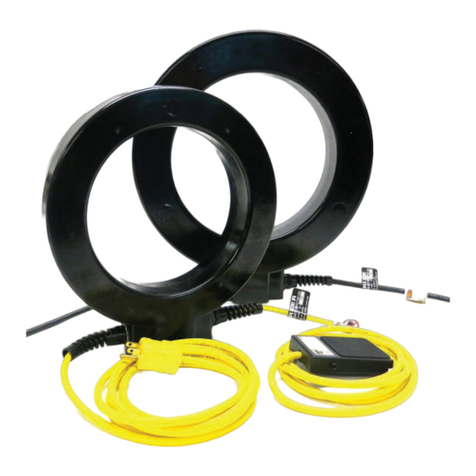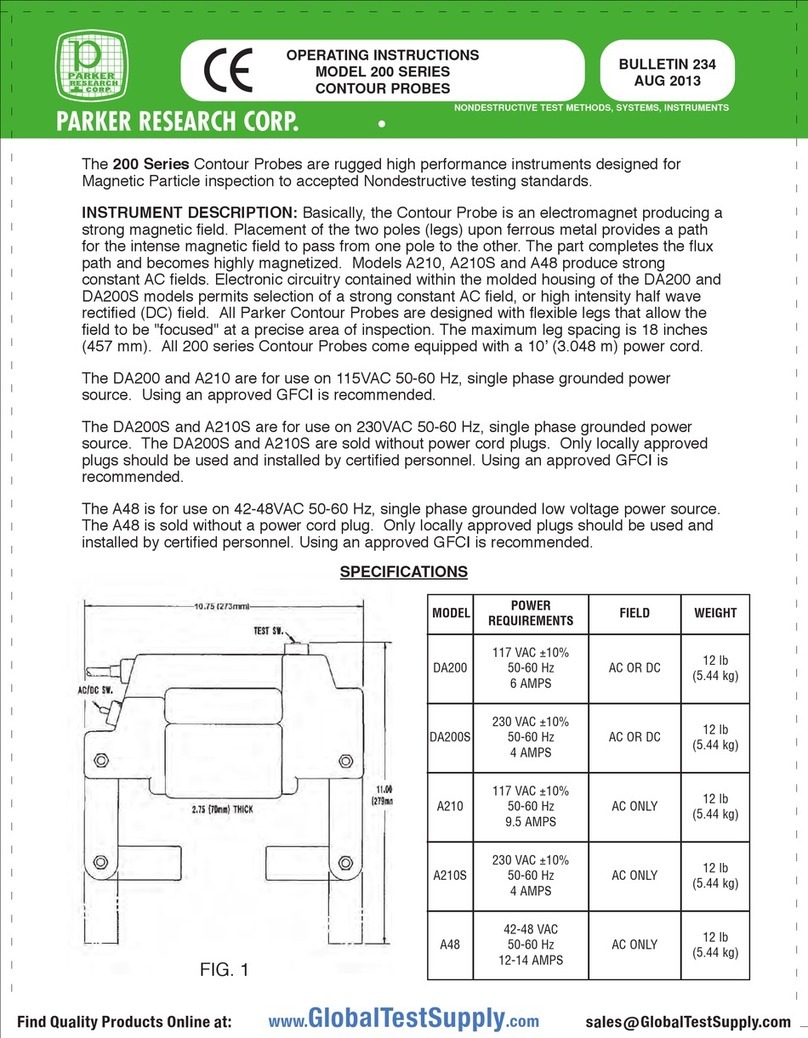
-2-
GENERAL SAFETY RULES
Please read all instructions. Failure to follow all instructions listed below may result in injury. If the
equipment is used in a manner other than as specified in these operating instructions, the
protection provided by the equipment may be impaired. Always wear eye protection
Do not abuse the power cords. Never carry the instrument by the cord or attempt to unplug the
instrument using the cord. Always operate the instrument with the standard installed cord.
Changing or using a damaged cord can increase the risk of electrical shock. The cord should be
checked periodically for any damage.
Do not position the instrument such that it would be difficult to operate the disconnect device (plug)
on the end of the power cord.
The outside housing should remain intact and solid. Any damage, chipping, or separating exposing
internal wires is a hazard. Instruments should not be used in this condition. The outside housing
should be periodically checked for damage.
Duty Cycle: The 310PDC series are designed for a 50% duty cycle, or approximately two minutes
on and two minutes off. Continuous operation may cause overheating and damage the Contour
Probe.
Operating Environment: Temperature: 32° to 104°F (0° to 40°C). Relative humidity: 10% to 95%, non-
condensing.
Shipping and Storage Environment: Temperature: 40° to 140°F (4.44° to 60°C). Relative humidity:
5% to 95%. Vibration and shock: As encountered in normal shipping and handling with no degradation
General Cleaning
The outside surface of the instrument can be periodically wiped with a clean cloth and a mild
general purpose cleaner. Avoid using cleaners such as lacquer thinner, or mineral spirits that could
damage the outside housing.
Never attempt field service. All B310PDC contour probes should be returned to the factory for
repairs.
OPERATION: Connect the instrument plug into the power outlet of the proper battery.
Place the Contour Probe legs upon the work surface with the suspected defect at right angles to the
legs (Good contact will produce the best results). Push the test switch to energize the instrument.
Lightly dust or float dry magnetic inspection powder over the area being inspected between the poles
(legs). Turn the Probe 90 degrees from the first test and repeat the process. This method may also be
utilized when applying a wet medium. Check all procedures and standards for further details involving
inspection specifics.
ELECTRICAL: The B310PDC obtains its power from a portable 12V battery. A green “Battery
Level” LED is located at the rear of the unit. Should the battery voltage drop to an insufficient level,
the light will go out indicating that charging is necessary. Additionally, if the green LED fails to light
with a sufficiently charged battery, it is an indication that there is a malfunction with the internal
circuit or with the connection to the battery. If a malfunction is suspected, the instrument should be
returned to the factory for repair. The 7.2 amp hour battery should remain at sufficient charge for
approximately eight hours or longer depending on use. The 14.4 amp hour battery should last
nearly sixteen hours or more.
























